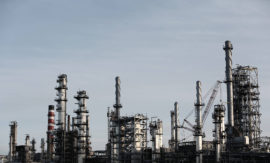Case Study: The Concept for the Process Industry
Up to now in these case studies, you have solved various logistics problems that were mainly in companies with convergent product structure (discrete manufacture) production settings. A glance at the basic process industries in which, for example, oil, natural gas, coal, energy or steel are produced and/or processed makes it clear that production structure has a considerable influence on the production infrastructure and layout. This leads to special circumstances that must be considered in production planning and logistics. Process-oriented production actually brings up new kinds of questions that have no equivalent in discrete manufacturing.
English Version
Process Industrie PDF
Process Industrie DOC
Attachment
Course sections and their intended learning outcomes

Course 8 – The Concept for the Process Industry
Intended learning outcomes: Produce characteristics of the process industry. Disclose processor-oriented master and order data management. Explain in detail processor-oriented resource management. Describe special features of long-term planning.

8.1 Characteristics of the Process Industry
Intended learning outcomes: Explain divergent product structures and by-products. Describe high-volume line production, flow resources and inflexible facilities. Produce an overview on large batches, lot traceability, and loops in the order structure.

8.2 Processor-Oriented Master and Order Data Management
Intended learning outcomes: Produce an overview on processes, technology, and resources. Present the process train: a processor-oriented production structure. Disclose lot control in inventory management.

8.3 Processor-Oriented Resource Management
Intended learning outcomes: Explain campaign planning. Differentiate between processor-dominated Scheduling and material-dominated scheduling. Describe a nonlinear usage quantity and a product structure with loops.

8.4 Special Features of Long-Term Planning
Intended learning outcomes: Disclose the determination of the degree of detail of the master production schedule. Describe pipeline planning across several independent locations.

8.5 Summary
.

8.6 Keywords
.

8.7 Scenarios and Exercises
Intended learning outcomes: Differentiate between batch production and continuous production. Calculate an example of manufacture of by-products. Elaborate an example of production planning in process industries.
